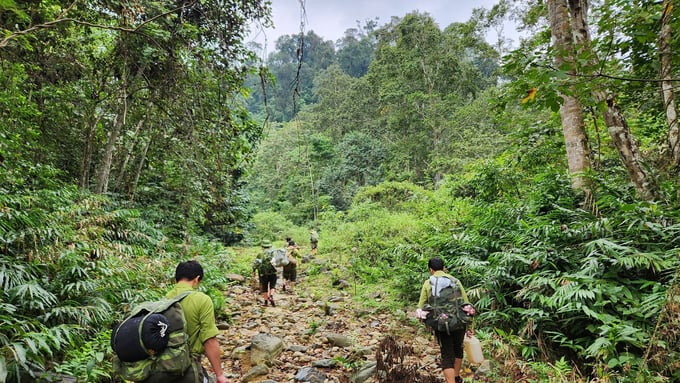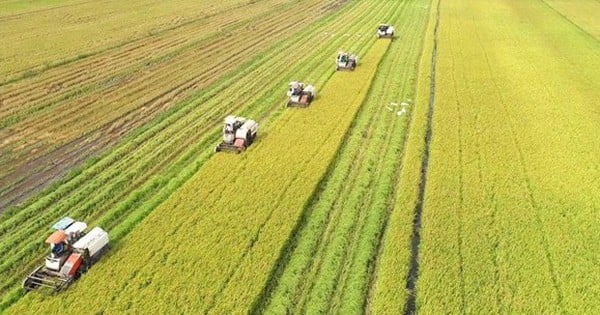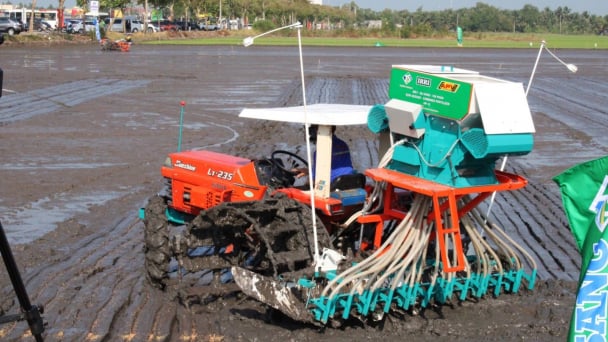May 20, 2025 | 15:12 GMT +7
May 20, 2025 | 15:12 GMT +7
Hotline: 0913.378.918
May 20, 2025 | 15:12 GMT +7
Hotline: 0913.378.918
Mr. Le Duc Giang, Vice Chairman of the Thanh Hoa Provincial People's Committee, has recently signed a decision approving the transformation of Xuan Lien Nature Reserve, located in Thuong Xuan District, Thanh Hoa Province, into national park (in English: XuanLien National Park).
XuanLien National Park is situated within the administrative boundaries of five communes and towns, including Bat Mot, Yen Nhan, Luong Son, Van Xuan and Thuong Xuan Town in Thuong Xuan District, Thanh Hoa Province. The park spans a geographic area with coordinates from 190 51'52" to 190 59'00" North latitude and from 104 57'00" to 105 19'20" East longitude.
The boundaries of XuanLien National Park are defined as follows: to the north, the park is bordered by the natural boundaries of the Khao River and Ken River, passing through the communes of Bat Mot and Yen Nhan. To the south, it shares a boundary with the Pu Hoat Nature Reserve in Que Phong District, Nghe An Province, with the natural dividing line being the border between Thanh Hoa and Nghe An provinces. To the west and southwest, it adjoins the Pu Hoat Nature Reserve and the remaining areas of Bat Mot Commune. To the east, the park is bounded by the summit of Bu Khang Mountain and the Cua Dat Hydroelectric Dam.
XuanLien National Park spans a total area of over 25.600 hectares, of which more than 23.800 hectares are special-use forest land. This includes a strict protection zone covering over 10.800 hectares, an ecological restoration zone of more than 10.300 hectares, and a service-administrative zone of over 2.500 hectares. Additionally, there are more than 912 hectares of production forest land and over 873 hectares of semi-flooded land in the Cua Dat Reservoir.
Xuan Lien is regarded as one of Vietnam’s national parks with a highly valuable and diverse biodiversity reserve. According to the results of surveys conducted in the park, Xuan Lien currently boasts over 1.228 species of higher plants. It is also home to 1.811 species of wildlife, which belong to 241 families, 46 orders and 4 classes. The park has identified 56 species of endangered and rare plants, including 35 species listed in the Vietnam Red Book (2007).
One of the park's most notable features is that it holds the largest population of the white-cheeked gibbon in Vietnam. At least 64 groups of this species, with a total of 182 individuals, have been recorded, a significant increase from 10 years ago when only 41 groups and 129 individuals were documented. The park also hosts over 200 gray langurs and has scientifically confirmed the existence of the "Roosevelt's Monkey", also known as the "Laos monkey", a species that was thought to have been extinct for nearly 100 years.

XuanLien National Park.
After being upgraded, XuanLien National Park will take on several key responsibilities and functions, including: protecting the integrity of forest ecosystems, preserving biodiversity, safeguarding genetic resources, conducting environmental education, supporting scientific research, and ensuring environmental protection. The park will also be responsible for maintaining a stable water supply for the Cua Dat Reservoir, which is closely linked to the development of ecotourism and providing forest-related environmental services. Additionally, the park aims to contribute to improving the livelihoods of the local communities in the buffer zones, promoting socio-economic development, and ensuring national defense and security in the region.
The park's primary focus will be to conserve and enhance the biodiversity of its forest ecosystems, particularly the rare, endangered, endemic plant and animal species, as well as those designated for priority protection in the area. It will work to protect and maintain the integrity of the natural forests, promote forest regeneration and restoration, and enrich the natural forest environment. The park will also be dedicated to propagating, cultivating, and spreading indigenous, endemic and precious tree species, while enhancing the overall forest cover. This work will be aligned with sustainable biological resource development.
XuanLien National Park will play a crucial role in strengthening its protective functions, particularly in safeguarding the headwaters, protecting the environment, and regulating water sources that serve vital infrastructure such as irrigation and hydropower projects, including the Cua Dat Reservoir. The park’s functions will include mitigating soil erosion and reducing the risks of floods, thus preserving the ecological environment. It will also ensure a stable and reliable water supply for agricultural activities and for the daily lives of the communities located downstream.
Furthermore, XuanLien National Park will enhance its scientific research functions and play a key role in raising public awareness, conducting educational programs, and providing training on environmental protection and biodiversity conservation.
Translated by Phuong Linh

(VAN) In 2024, over 295 million people across 53 countries and territories faced acute hunger—an increase of almost 14 million people compared to 2023, while the number of people facing catastrophic levels of hunger reached a record high.

(VAN) World Environment Day 2025 (June 5) carries the theme 'Beat Plastic Pollution' continuing to emphasize the global urgency of addressing the plastic waste crisis.

(VAN) This was the assessment shared by experts at the workshop titled 'Assessing the Role and Potential of Low-Emission Rice Production Systems in Vietnam,' held on the morning of May 19.

(VAN) Cai Rong Port is the fisheries control center of Quang Ninh, helping to monitor fishing vessels, combat IUU fishing, and remove the EC's 'yellow card'.

(VAN) The German Agricultural Society (DLG) explores the possibility of establishing a mechanization service center in Vietnam’s Mekong Delta to support farmers in accessing and utilizing advanced machinery.

(VAN) On May 16, the Department of Water Resources Management, in collaboration with the Food and Agriculture Organization of the United Nations (FAO), held a signing ceremony for the GEF-8 project document.

(VAN) Food safety, mechanization, vocational training, and market opening are key areas of cooperation expected between the Vietnamese Government and the Federal Republic of Germany.